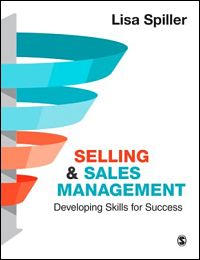Communicate, Connect, Sell!
Much of the success of professional selling and sales management relies on communicating effectively with the intended prospect. Years ago, when developing the sales course at my university, I reviewed all of the available sales textbooks in order to select one to use for my students. I noticed that most books were lacking in what I believe are key cutting-edge topics that students should learn to prepare them for careers in sales-related fields. Some of those topics include storytelling, neuro-linguistic programming, determining willingness-to-buy, servant leadership, and sales analytics.
As an educator, I know how important it is to have relevant content in the textbooks we use. That’s precisely why I wrote Selling & Sales Management: Developing Skills for Success. Let’s touch on a couple of these topics.
Storytelling. Why should students learn how to compose stories? We live in an over-communicated world where we are constantly bombarded by messages demanding our attention and yet our average attention span is merely 8.25 seconds. So, unfortunately, even the most passionate sales pitches can sometimes result in information overload for consumers. Whereas attention-grabbing, persuasive stories that are intriguing and meaningful to consumers will effectively break through the distractions, disinterest, and content overload to establish rapport, build trust, and add value. Stories are more powerful and impactful than are mere facts, and they work to get the consumer to take notice, stay engaged, and remember. In fact, people will remember facts and figures more when they are woven into stories.
Thus, in our dynamic, digitally-driven world, salespeople need to weave persuasive stories into their passionate pitches to be most effective. My book teaches students how to become master storytellers by delving into the three components of every story (beginning, middle, and ending), the step-by-step process to compose persuasive stories, the types of images to use to enhance the story, and how to evaluate the measurable impact of storytelling. Following these steps, students learn how tell convincing and memorable stories that convey the high value and impact that their product or service will deliver for their customers.

Neuro-linguistic programming (NLP). Originally developed by researchers to help therapists more effectively interact with their clients, NLP techniques can be applied when selling to enable salespeople to build rapport and more effectively engage with current and prospective customers. My book teaches students how to determine their own dominant mode of communication (visual, auditory, or kinesthetic), actively listen for cue words and phrases to identify a prospect or customer’s dominant mode of communication and adjust their communication style to match or mirror each of their prospects or customers.
Applying NLP enables students to become salespeople who can get in sync with each of their prospects and customers by speaking their language. This enables them to communicate more effectively and connect with all prospects and customers, regardless of their unique personalities and diverse communication styles.
My book thus teaches students both the hard and soft skills needed to be successful in their future sales careers. Many of these skills can also be used in personal development to enhance other important interpersonal relationships. Selling & Sales Management: Developing Skills for Success empowers readers to learn state-of-the-art concepts and master cutting-edge skills they’ll value and use for decades to come.





































































































